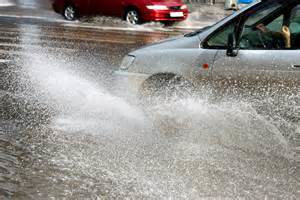 When you live in Arizona, New Mexico or many other places in the Southwest, you know that monsoons and flash floods can threaten you at any time during the warmer months. It is one thing when you’re protected being inside, but when you’re driving and a monsoon comes through, it can threaten your safety. In fact, June 15th through September 30th has been defined as “The Monsoon.” It is a period of extreme heat that is typically followed by an influx of moisture leading to daily rounds of thunderstorms. These thunderstorms present an array of hazards which often strike suddenly and with violent force including flash floods. Some of these hazards include slippery roads, unexpected wind gusts, flooded highways, and poor visibility.
When you live in Arizona, New Mexico or many other places in the Southwest, you know that monsoons and flash floods can threaten you at any time during the warmer months. It is one thing when you’re protected being inside, but when you’re driving and a monsoon comes through, it can threaten your safety. In fact, June 15th through September 30th has been defined as “The Monsoon.” It is a period of extreme heat that is typically followed by an influx of moisture leading to daily rounds of thunderstorms. These thunderstorms present an array of hazards which often strike suddenly and with violent force including flash floods. Some of these hazards include slippery roads, unexpected wind gusts, flooded highways, and poor visibility.
In order to minimize accidents, deaths or even car repairs, we want you to know what to do in these types of events. Your safety should always come first when driving a vehicle and driving through or during flash floods is not a good idea. An average of 75 people have died in the U.S. from flash floods each year from 2004-2013, according to the National Weather Service. You don’t want to be a statistic! If you find yourself approaching a flooded area, do not drive through it, especially if you don’t know the depth of the water. Even six inches of water will reach the bottom of most passenger cars, causing loss of control and potential stalling. Just a foot of water will flood most vehicles and the National Weather Service warns that even just two feet of rushing water can carry away most vehicles, including SUVs and trucks! Once your vehicle begins to float, the floodwater is what will be steering it, not your steering wheel.
What else can you do to protect yourself driving during monsoon season? To start, be sure to check your windshield wipers for cracks, your tire tread and headlights or brake lights. Allow for extra time when driving, plan ahead and leave early. Slow down, too. When it rains, oil and grime rise to the surface making it slick. Avoid jerky movements when braking, accelerating or turning. Avoid tailgating cars ahead of you, as it takes three times longer to stop on wet pavement than a dry one. If you’re unsure whether you can handle driving through the storm, pull over to a safe place. Keep your lights on but make sure you’re completely off the road. Don’t drive through flooded areas, avoid downed power lines and don’t take pictures, all of which are dangerous actions.
Driving through flooded streets or low levels of water is not only unsafe, but not good for your vehicle. If the flash flood has turned into your car sitting in water for a long period of time, you’ll want to start the process of drying out your vehicle right away. You don’t want mold to grow inside your vehicle and you don’t want a vehicle that will stall or not start either. We encourage you to bring your vehicle to an auto repair shop so that we can change the fluids. Starting a vehicle that has water in your oil can destroy the engine; the same with your transmission. Corrosion can occur if water has been in contact with your vehicle for too long too. Remember the saying, “turn around, don’t drown!” Safety first when driving during the Southwest monsoon season! If you do find that your vehicle has been through water and you’re concerned about damage, our repair technicians can help to identify any car repairs which are necessary to keep your vehicle performing well and safe in the future.
Schedule My Appointment Now!

